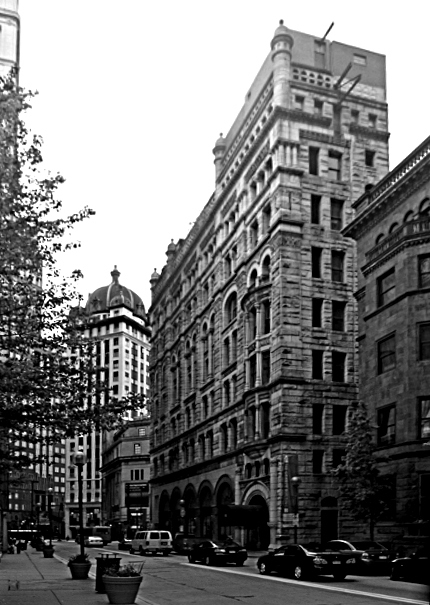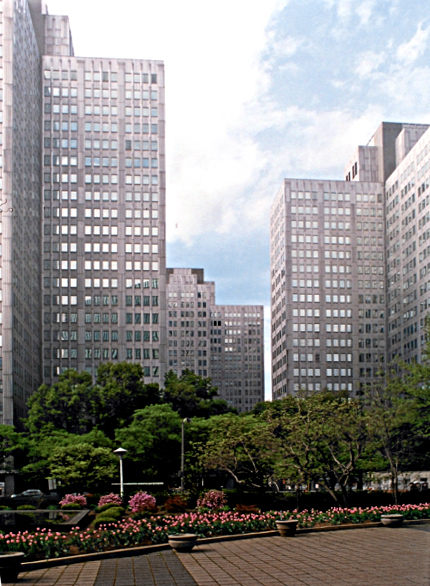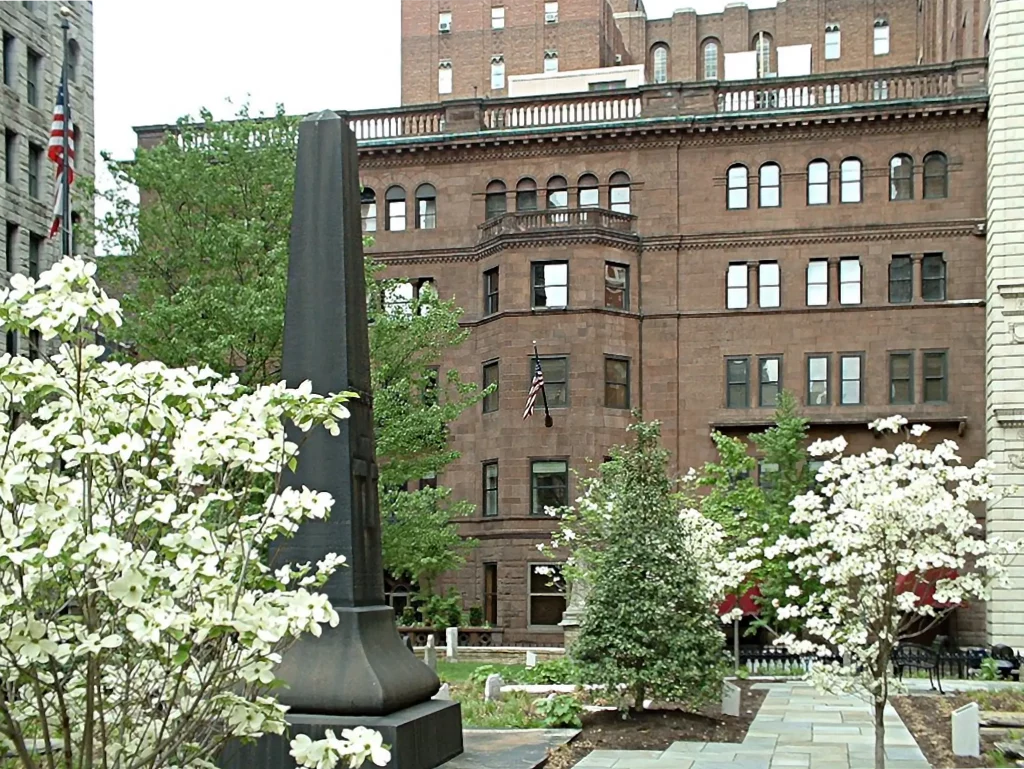
Seeing the Granite Building in black and white (taken with a Zenit camera with a 28-mm Vivitar lens) brings out the variety of textures and ornaments. In the background is the Keenan Building.

Seeing the Granite Building in black and white (taken with a Zenit camera with a 28-mm Vivitar lens) brings out the variety of textures and ornaments. In the background is the Keenan Building.

Taken with a Zenit-B camera, which is a Soviet-era SLR, and a Vivitar 28-mm lens, which is of course not Soviet, this picture from Equitable Plaza shows Gateway Center as the perfect modernist ideal. No wonder it got so much attention.
Gateway Center is just across the street from the Gateway Center subway station.

In the late afternoon, the declining sun plays with the shining surface of Three Gateway Center. Below, this modernist fountain is one of Gateway Center’s chief attractions.

On a spring or summer evening, a favorite Pittsburgh pastime is to ride a streetcar or drive to Station Square, and then take a boat to the baseball game. The short trip actually takes us on all three rivers. Above, the Majestic, flagship of the Gateway Clipper fleet, chugs under the Fort Pitt Bridge on its way to PNC Park; below, the little Countess and the Princess make the same trip.

This 1980s postmodernist skyscraper replaced the beloved Jenkins Arcade. The bottom floors of the tower are also a shopping arcade, and a rather pleasant one, but old-timers will tell you it’s just not the same.
Fifth Avenue Place is across a rather complicated intersection from the Gateway Center subway station.

Another aluminum company built another aluminum skyscraper that, like the Alcoa Building behind it, bears a more than passing resemblance to a stack of television sets. Here we see it from Mellon Green.
The Porter Aluminum Building (now the FHL Bank Building) is half a block up Grant Street from the Grant Street exit of the Steel Plaza subway station.
In 1931 Andrew W. Mellon had been Secretary of the Treasury for ten years. He was one of the most powerful men in the world; they used to say that three presidents had served under him. This building was his gift to his native city, a reminder of his almost imperial power, and a perfect example of the architectural style Father Pitt likes to call American Fascist.
The word “fascist” comes from fasces, an ancient Roman symbol of authority. The fasces are a bundle of twigs with an axe in the middle. And here they are, right over the entrance, making this perhaps the only literally fascist building in Pittsburgh. [Update: This is far from true; once he started to look for them, old Pa Pitt found that fasces were quite common on government buildings before the Second World War.]

The Federal Building is a block and a half north on Grant Street from the Steel Plaza subway station.
The Allegheny Club has its influence, and the Harvard-Yale-Princeton Club is awash in old money. But the Duquesne Club is where the power is. This is the club that runs Pittsburgh, and from here much of the rest of the world. It’s the Illuminati, the Bilderberg Group, and the Trilateral Commission all rolled together in one tastefully decorated brownstone building. Here we see it from Trinity Churchyard across Sixth Avenue.

And now old Pa Pitt will regale you with a Duquesne Club story he heard many years ago from an artist who made her living painting portraits of the excessively rich.
One of this portraitist’s clients had invited her to the Duquesne Club for lunch, and while she was waiting to meet him, she noticed an impressive collection of paintings on the walls by that great humorist in oils, David Gilmour Blythe. She approached one of the impeccably outfitted guards to ask whether the club ever lent any of the paintings to the museum.
The guard drew himself up to his full dignity. “Madam,” he said in carefully measured tones, “we are the museum.”
The Duquesne Club is half a block up Sixth Avenue from the Wood Street subway station.

In the 1980s boom, Mellon Bank intended to build a whole clot of skyscrapers around One Mellon Center on Grant Street. This open lot was reserved for that expansion, but it never happened. Having given up on those grandiose plans, the current owners have turned it into a pleasant urban oasis with a fountain in the middle.

The Ross Street exit of the Steel Plaza subway station is right at the corner of Mellon Green.